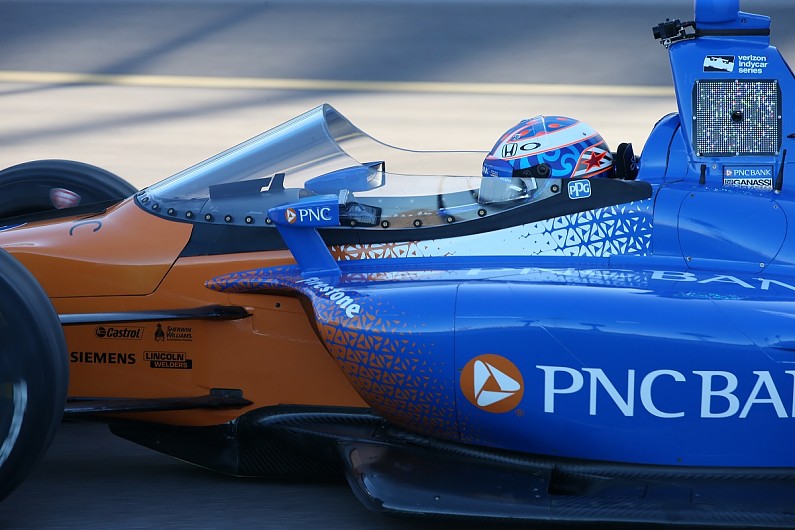Upgrade for free today
You have only 5 articles remaining to view this month.
IndyCar’s new aeroscreen made its track testing debut at Phoenix on Thursday, with four-time Scott Dixon positive but suggesting work needs to be done before its full implementation.
The windscreen is made of a proprietary Opticor advanced transparency material by PPG, which uses the same material to produce fighter jet canopies.
Dixon played down fears its curvature or rake might cause visual distortion.
“There’s no game-stoppers,” he said. “It’s a little bit different looking through something that’s so thick, but I thought it would be worse with distortion but there was nothing like that.”
The Chip Ganassi Racing driver noted two major side-effects.
“The weirdest thing is how quiet it is. You have no buffeting, the car feels very smooth, it feels like you’re in a luxury well-damped car,” Dixon added.
“But cooling! We need some cooling, just because you get no airflow through the car.
“Kudos to [IndyCar and PPG], but there’s definitely things that we can improve on and make better.”
With the first test taking place on the Phoenix oval, Dixon said it was hard to transfer his initial impression of the screen to other tracks.
“It will be interesting on a road and street course in terms of perception of the corner and how you come into it,” he said.
“[We need to] see if there’s an issue regarding where you look through it. But nothing yet.
“Visually, I want to see if you get more used to it, because it does feel different.
“You’re looking through quite a substantial amount of material and it just takes a while for your eyes to adjust.
“The longer I ran, the more I adapted to it. Your brain and eyes just need to catch up with it.”
Dixon said there was no prism effect from the sun glare even when running “in one of the worst times” with the combination of low sun and dark shadow from the grandstands.
“You’re going from complete blinding sunlight heading into Turn 1 and then a black transformation going through the corner, and there was no real area of light that stopped your vision,” he said.
“It may have even helped a little bit with the glare you typically get through your visor.”
Dixon suggested all drivers should get acclimatised to the screen before it is introduced.
“It could affect different guys in different ways,” he said.
“It’s almost like something everyone needs to try before IndyCar implement it across the board.”
IndyCar has not yet set a timeline for when the device might be fully introduced, though its president of competition and operations Jay Frye did not rule out racing it before the end of 2018.
